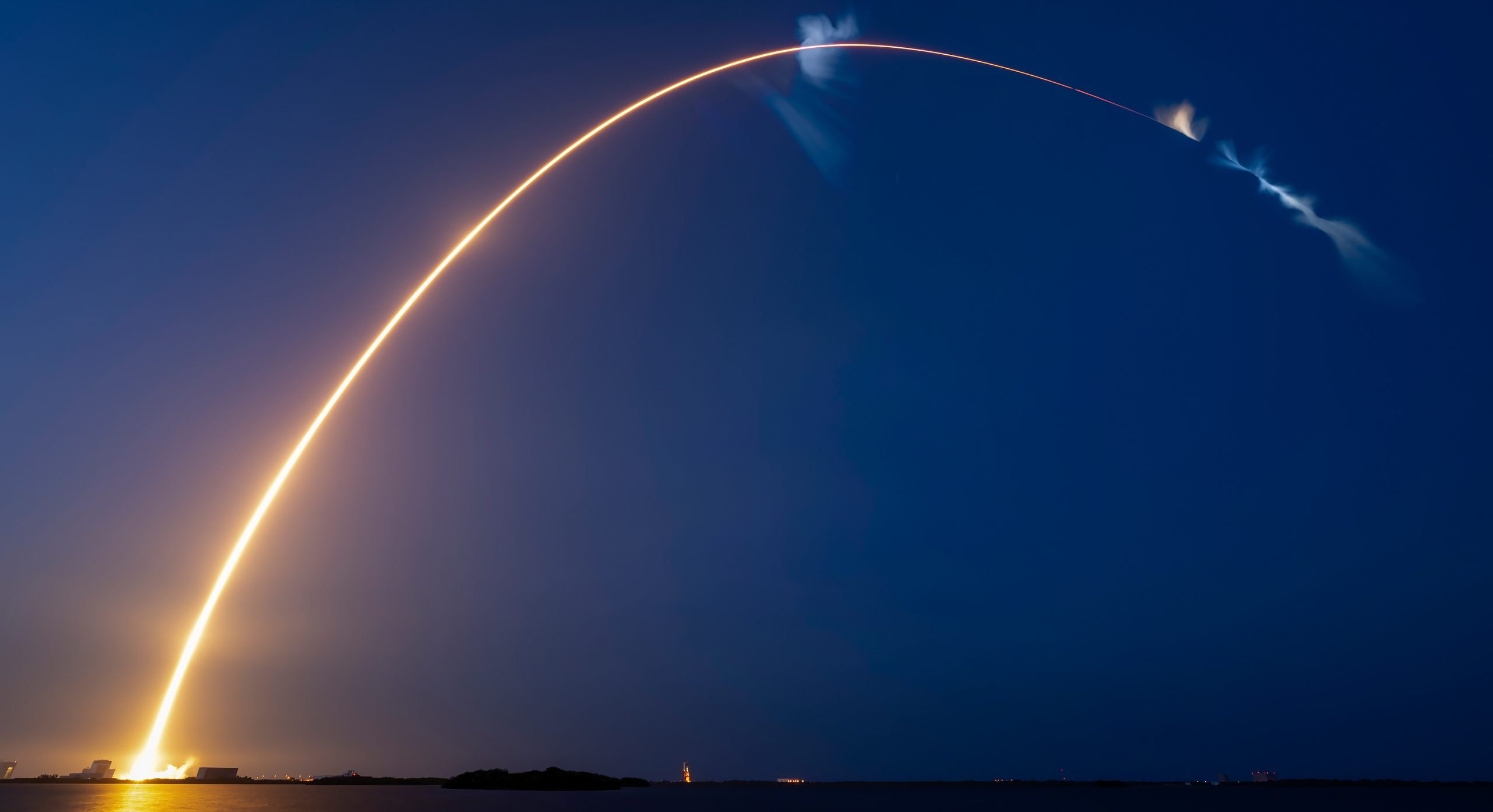SpaceX launched a Falcon 9 for the 21st time on Friday with a launch from Space Launch Complex 40 at Cape Canaveral Space Force Station, breaking their record set just 35 days prior.
It only took 35 days for Booster 1062 to take to the skies again to help deliver 23 V2 mini Starlink satellites to orbit, showcasing SpaceX’s ability to quickly refurbish their fleet flight leaders.
The 23 Starlink satellites — part of Group 6-59 — were launched to the Southeast and into a 43-degree orbital inclination, the same as prior Group 6 missions. The company had recently gone through a slight lull in launches from Florida as the Just Read the Instructions droneship was undergoing maintenance. The droneship is now back in action and already heading toward the next landing zone for a Starlink launch this week.
Booster 1062 broke the launch record in style, with a launch just after sunset local time. As B1062 ascended, it flew back into sunlight right before stage separation, and as the second stage ignited, the exhaust plume lit up, creating a “Jellyfish effect,” putting on a beautiful show for anyone who happened to be outside to catch the launch.
The “Jellyfish effect” created by the 2nd stage of the Falcon 9. (Credit SpaceX)
The lighting was just right to where you could track not only the first stage but also both nose cone fairings with all three using cold gas thrusters to help orient themselves for the trip back through the atmosphere to be recovered.
B1062 made its 21st landing on the droneship ‘A Shortfall of Gravitas’ just short of eight and a half minutes after liftoff. The view of the launch from the recovery was just as epic which could be seen in this post from Elon Musk below.
SpaceX has a busy week if weather or technical issues don’t get in the way. First up is a classified payload for the National Reconnaissance Office currently scheduled for no earlier than 1:00 am PT on May 22nd from California, followed by back-to-back Starlink launches from Florida on May 22nd (NET 10:33 pm ET) and May 23rd (NET 6:45 pm ET).
Questions or comments? Shoot me an email at [email protected], or Tweet me @RDAnglePhoto.

Dr. Thomas Hughes is a UK-based scientist and science communicator who makes complex topics accessible to readers. His articles explore breakthroughs in various scientific disciplines, from space exploration to cutting-edge research.








